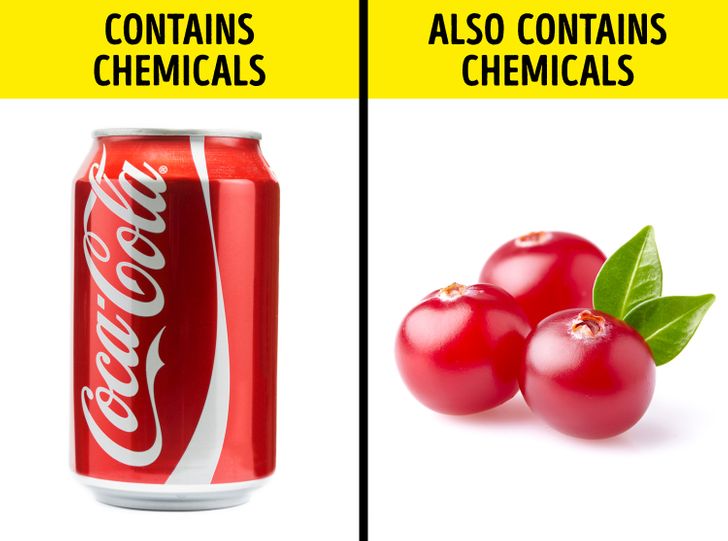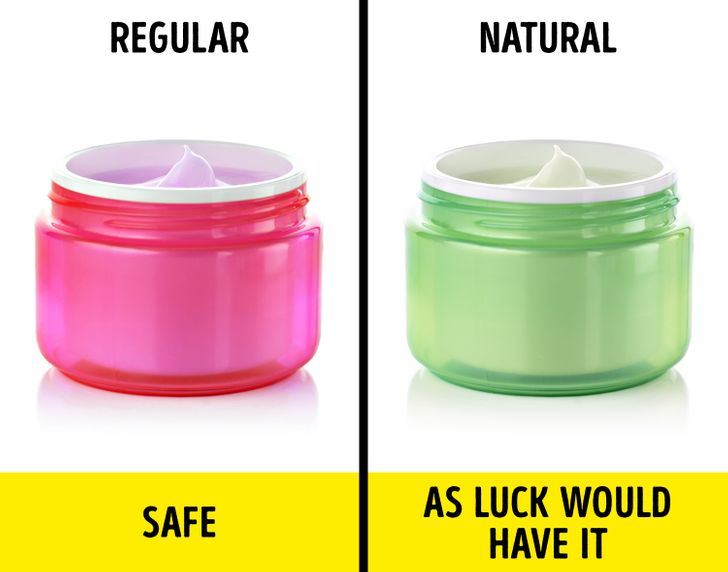The trend to use the term “all-natural” has pushed all boundaries, causing people to fear the chemical dangers that await them around every corner. Although all televisions keep telling us how harmful it is to consume transgenic products, there are still thousands of products that have been helped in the selection process and are sold in supermarkets.
It turns out that this selection process hides much more interesting things than we imagine. We decided to dispel the myths about natural foods and cosmetics and answer a simple question: “Is it really as good as it is depicted?”
Myth #1: Organic Food Is Always Healthy

We see slogans everywhere that promote the consumption of only food grown on organic farms. They say that natural means healthy, while artificial means harmful. They also say that we are surrounded by chemicals that irreparably damage our health and our bodies.
Surprisingly, this is not true: our foods contain chemicals, but that does not mean that natural products are always safe for your health.
There are many substances in nature that are true plant weapons. For example, blueberries have an excessive amount of preservatives, while almonds and apricots contain poisonous cyanide.
The most important thing here is how these substances affect or do not affect the human body (excluding allergic reactions) because the amount of damage is usually determined by dose.
Therefore, it is not known which is more harmful: drink 3 liters of Coca-Cola or eat 3 kg of blueberries.
Studies have shown that the “organic” brand does not mean that this food was grown without the use of pesticides. Furthermore, the World Health Organization emphasizes that no pesticide with the permitted use in world trade harms people’s health.
Only agricultural workers are adversely affected by them, due to the large number of people who regularly surround them.
In addition, this food contains more bacteria because the animals do not take medicine and eat what they want. Ecology fighters should also think about the following fact: organic farms produce fewer products, which means that harmful emissions are higher in terms of a unit of production grown.
Either way, the choice is up to the consumer, but there is no guarantee that food from an organic farm is healthier than food grown on a regular farm.
Myth #2: Natural Cosmetics Are The Best Choice For Your Skin

So, as we found out, natural origin does not mean total safety and the situation with skincare is the same. Also, if the cosmetics are certified, they will be safe, no matter how many artificial components they have.
All because manufacturers have no interest in producing goods that harm their customers. Another question is whether this suits you individually or not.
Plant components are not as stable as artificially synthesized components, they are more difficult and expensive to obtain. In addition, they can act very unpredictably on the skin and cause an allergic reaction, some more, some less. Any synthetic component can cause the same reaction if it doesn’t match your skin.
Whether it is harmful or beneficial also depends on the concentration, the formula, and many other factors. For some time now, women bleach their skin with the help of a powder that contains a lot of lead (well, isn’t that natural?).
Unfortunately, many women ended up having significant problems with their skin and their health due to these beauty procedures. These days, manufacturers also add lead to lipsticks, but since it has a minimal concentration, a person would have to eat 30,000 tubes to be poisoned.
Again, it is up to you to decide what to use. After all, if the item fits you well and you enjoy wearing it, does it really matter what the manufacturer promised on the packaging?
Myth #3: Gmo Is Dangerous For Your Health

Suppose agronomists need to produce a new type of frost-resistant strawberry. To obtain the result, they must use the genetic improvement selection process. There are several types of creation, including one in which the method of exposure to toxic substances is used, after which agronomists can choose the most suitable mutant.
This type of strawberry can end up having excessive amounts of different substances because the method used to produce it is not ‘elegant’.
Genetic modification, unlike selection, is highly technological and allows the alteration of specific genes. The fears around GMOs are incredibly exaggerated. In addition, no harmful effects of this technology on human health have been detected in decades of its existence.
In addition, the active implementation of genetic engineering can help enrich products with necessary nutrients and supply poor countries. For example, vitamin A fortified ‘golden rice’ could have saved millions of people from going blind if it had been allowed to use earlier.
But in fact, it takes scientists a long time to prove the safety of their innovations to society, publishing an infinite number of scientific papers on the safety of GMOs and testing the plants and crops they have handled a million times.
Of course, the GMOs must be controlled, but common panic, lack of awareness, fictional conspiracy theories, and prohibitive laws only make the situation worse and prevent science from developing.
Which of these myths do you believe in? Will you change your mind about them? Let us know in the comments!
Preview photo credit Depositphotos.com, Depositphotos.com


